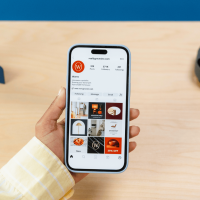In an age where advertising budgets can run into the millions, some of the world’s most talked-about brands are thriving on what appears to be nothing at all, at least when it comes to paid promotions. Instead of pouring money into traditional marketing, they’re harnessing the power of human behaviour, storytelling, and the internet’s unparalleled ability to spread ideas fast.
This is the $0 marketing strategy: growing through word-of-mouth and virality alone. And for many companies, it’s not just a tactic—it’s the entire playbook.

Why Word-of-Mouth Works More Now
Trust develops most powerfully through verbal communication between people. The contemporary world features a difference in how fast word-of-mouth travels. One good recommendation can easily spread instantly to millions of users on TikTok, Instagram, and X (previously Twitter). A meme, a tweet, or a 10-second video can now do what used to take expensive ad campaigns months to achieve.
This is a common strategy in crypto space. New crypto projects use carefully crafted word-of-mouth strategies based on research from experienced crypto marketing agencies to drive presale revenues. This is particularly useful since presales are a form of fundraising for projects with little to no marketing budgets. The same strategy can work for other industries as well. (Source: https://nuco.io/)
How Duolingo Turned an Owl Into a Worldwide Sensation
Duolingo stands out as a language teaching application for its entertaining social media content. Due to its comedic skits starring the green owl mascot, Duolingo amassed thousands of followers across its TikTok account, which is supervised by a small editorial team.
Instead of spending largely on advertising its product, Duolingo produces content that matches the natural identity of the platform. It’s fun, silly, and incredibly shareable. The result? The platform accumulated over 10 million enthusiasts while continuously producing hit content. Relational content, along with entertaining material, serves as an effective brand growth driver.
The Tesla Template: Founder as Influencer
Tesla is a notable example of executing a zero-cost marketing strategy. The company has not depended on traditional advertising in its business operations. Through his extensive online activity, Elon Musk drives public attention, makes product announcements, and fuels discussions.
This consistent stream of social media content results in global press coverage and customer engagement, without the need for billboards or TV slots. Tesla also benefits from passionate user communities that create their own content, reviews, and tutorials, amplifying the brand even further.
Africa’s Own Nando’s Keeps Winning Hearts
For years, Nando’s has demonstrated exceptional skills in creating word-of-mouth marketing for its food chain operations in South Africa. The realistic advertising methods that appeal to culture have made the brand famous while avoiding expensive spending.
Nando’s generates shareable marketing campaigns which include comical views on politicians and popular topics. Their distinctive voice and responsible sense of humour guarantee a bond with followers across social media.
Community-Driven Content Creation
Concepts behind no-cost marketing success lie in the management of established communities, which these businesses successfully execute. Brands must establish strong connections through dedicated communities beyond achieving basic reach.
A case study is the beauty brand Glossier. The organisation focused primarily on building its product line through direct consultations with beauty enthusiasts. The brand’s community activities compelled people to love it and, in turn, market it on their own until it became an acclaimed cult favourite. The brand also actively supports beauty business owners. It has granted over $1.4 million to founders since 2020. In 2024, it allocated $400,000 to beauty founders based in the US and the UK.
Not Just Luck: How Virality Is Engineered
Contrary to popular belief, virality isn’t random. Some brands put effort into studying their audience’s interests before establishing any posting routine. The purpose is simple: brands seek to develop content that consumers want to spread.
Grammarly users are an excellent example of this case. The platform evolved primarily because users voluntarily introduced it to new individuals who then proceeded to share productivity advice and demonstrate the platform’s features on YouTube. The platform easily experienced growth because people who used it recommended it, not random celebrity endorsements.
Collaboration with Content Creators is the New Word-of-Mouth
Social media creators are essential channels for proper message distribution. These partnerships yield maximum success when individuals with lower numbers of followers have excellent engagement, which demonstrates deep loyalty.
Nano and micro influencers create an impression of trustworthiness in their audience. A brand may partner with 50 creators who have 10,000 followers each instead of giving money to an influencer with one million followers. When users encounter this type of content, they sense authenticity, which breeds trust and finally great customer acquisition for the brand.
Why do People Share?
The common theme in zero-dollar marketing is genuine shareability. Research data shows that people typically distribute content because they want to create an emotional response. It may be to cause amusement, motivation, eagerness, or provide knowledge. Sharing is a primary social behaviour. According to a New York Times research, 73% of people share online to connect with others who have shared interests. And 78% share because it enables them to communicate with people they might not otherwise stay in touch with.
Companies achieve success by understanding emotions and psychology instead of spending large amounts on marketing. Some businesses achieve higher impacts from product reviews that make people laugh, hopeful, or excited.
Lessons for Startups and Entrepreneurs
The use of this strategy for new businesses serves both to save costs and create credibility in the industry. Here are a few key takeaways:
- Your team should be human by showing warmth and authenticity as they tell the brand’s story.
- New businesses should participate in popular topics that align with their identity.
- Short and mobile-friendly content with emotional appeal should make up your marketing strategy because it improves shareability.
- A simple referral reward system should exist for customers who bring new members to the business
- You should use feedback to shape your product development.
The Risks of Going Fully Organic
Becoming viral is desirable, but placing everything on the power of word-of-mouth is risky. Trends can decline, and there is no guaranteed formula because success achieved through a specific marketing strategy in one period may not be sure for another time.
Brands merge organic (word-of-mouth) marketing, targeted SEO, email marketing, and paid ads. Many also engage the services of professional marketing agencies to ensure their marketing goals are met.
The Future of Marketing Isn’t Always Paid
The method for successful brand promotion remains straightforward: consumers discussing products or services that they genuinely admire, and digital technology enables such word-of-mouth marketing to spread rapidly across vast audiences. Brands that appreciate authentic communication about their products tend to bring new flavours to their industry.
You don’t need millions in budget to make an impact. Sometimes all it takes is a strong message, a good story, and the willingness to let your audience do the talking.

Founder Dinis Guarda
IntelligentHQ Your New Business Network.
IntelligentHQ is a Business network and an expert source for finance, capital markets and intelligence for thousands of global business professionals, startups, and companies.
We exist at the point of intersection between technology, social media, finance and innovation.
IntelligentHQ leverages innovation and scale of social digital technology, analytics, news, and distribution to create an unparalleled, full digital medium and social business networks spectrum.
IntelligentHQ is working hard, to become a trusted, and indispensable source of business news and analytics, within financial services and its associated supply chains and ecosystems










